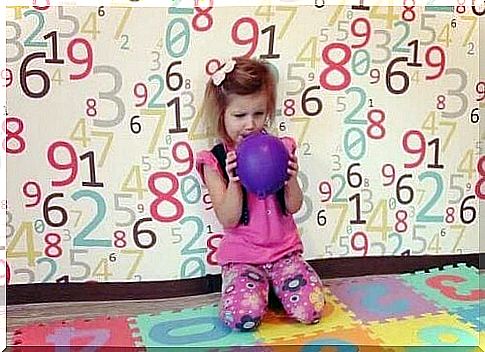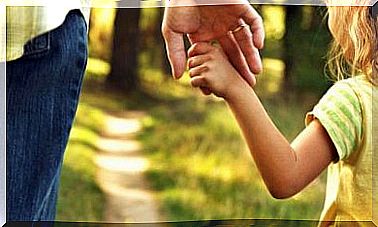Balloon Breathing: Calm Your Child In A Fun Way

Balloon breathing is a great way to help children regulate their emotions. It can help them calm down and at the same time develop a greater awareness of their body. It’s a simple tool they can start using when they turn 7. By using it, they will gradually begin to improve their emotional intelligence.
None of us want to see our children or students overwhelmed by their frustration. No one will see them in such anger that they end up in a massive, screaming fit of rage. But when they are two years old, their emotional world (still unknown to them) tends to become a problem and a source of tension in the family.
There is also something we need to remember here. Our goal as parents or teachers should not be to remove any source of anxiety from the child’s life. It is not logical. It is also not a good idea to smooth their way through the day so that everything is more comfortable and perfectly tailored to their expectations.
The world as we all know does not work that way. The key is to give them the tools to manage their anxiety, anger and sadness themselves.
Balloon breathing is an original, fun and extremely useful strategy for children. It also fits perfectly with the goal we just mentioned. Keep reading to learn how it works.

Respect a child’s feelings without empowering their anxiety
Children often use sobbing, howling and tantrums as a way to deal with something they do not like or something that makes them anxious. It is often their only tool they have available.
Instead of getting desperate, instead of making the situation worse by shouting, scolding them or punishing them, put yourself in their place. Or to be more specific, put yourself in their head.
The cerebral cortex matures slowly but steadily throughout our lives. This means that things like impulse control and emotional control are usually not fully developed until after adolescence. It’s a long period that brings a lot of conflicts between people.
Some children have a good grasp on controlling their emotional states. Then there are children who are much more sensitive, uncomfortable and loud about their anxiety.
Being aware of these things is very important. Ultimately, the most important goal for you as an adult is to be empathetic towards them. Try to understand their frustrations and anger. But at the same time, remember that validating an emotion is not the same as accepting it.
It just means acknowledging that it exists, and having tools at hand for the child so they can learn to understand it, deal with it, and treat it. Therefore, balloon breathing is a great place to start. It’s a wonderful technique to show them when they turn 7.
What does balloon breathing do for children and how do they actually do it?
Balloon breathing is an exercise you can teach children to help them calm down and control their impulses. They should do this when they feel nervous or angry.
In these moments, it helps them control themselves, stay calm, stimulate their psychomotor skills. It helps them develop an awareness of their body, things like posture and laterality.

What do you need?
If you want to help them do balloon breathing, then this is what you need, in terms of circumstances and material:
- A balloon for the baby. If you do this in a classroom, try to make sure it is a comfortable and spacious environment, without too many stimuli.
- You should have mats or pillows in your classroom so the kids can go to bed at some point.
- Remember that giving a balloon to a child under the age of 7 can be dangerous.
What should you do?
To practice this technique, follow these steps:
- Do not give the children a balloon until you have explained how this activity (or this game) works.
- Simply explain to them how their bodies react in a particular way when we let tensions and emotions such as anger, rage or frustration overwhelm us.
- Once you have explained this, then you can give them a balloon. Afterwards, ask them to start inflating it. As they do, you tell them about how our minds and bodies are like this balloon. The angrier we are, the more air and negative emotions will be inside. It will continue to expand until at some point it bursts (let it happen).
- Then you can give them another balloon. But this time you tell them to just inflate it a little bit and then let some of the air out. The balloon will return to its original state without bursting. Now it is calm and relaxed.
- Finally, ask the children to lie down on the floor (on mats or pillows).
- Now they have to imagine that they are a balloon. An angry, angry balloon that fills with a lot of air. Their stomachs are filling up, their arms, their legs… they are about to burst because all their negative emotions have taken over.
- What now? Close the air out of them and let them notice all the relief they feel in their body. Now they feel lighter, more comfortable and happier.

Practical application
Finally, remind children that whenever they feel full of anger, when life gets complicated and brings things that are uncomfortable, not waiting for them or making them uncomfortable, they should think about the balloon. They should never let it explode, because when that happens, we all lose and we all get scared.
When you feel nervous, there is nothing better than breathing deeply and shutting the air out of your lungs. Releasing all that tension will help you feel lighter and more in control of yourself.









